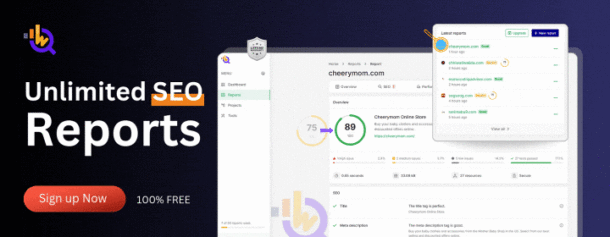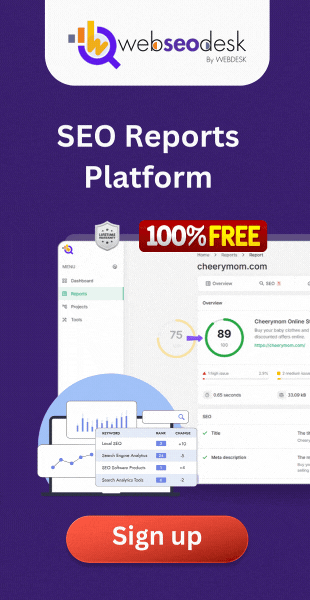The success of your website depends on a flawless user experience (UX) in the current digital terrain. But user experience affects search engine optimization (SEO) as much as it does visitor interaction with your website. UX and SEO are more closely linked than it first seems since Google’s algorithms give websites with a good user experience top priority. This post will go over how UX and SEO interact and how best to maximize both to improve the performance of your website.
- Page Load Speed and Search Engine Optimization
Page load speed is among the most important features of user experience. Users of slow-loading websites become frustrated, which could affect the bounce rate and reduce interaction. Google acknowledges this and ranks page load speed among other things. Faster-loaded websites are more likely to show higher in search results.
Quick page loads not only keep visitors on your website but also indicate to Google that your site is speed-oriented, therefore enhancing the user experience. Optimizing graphics, cutting pointless scripts, and using lazy loading to guarantee quick loading times will help to improve UX as well as SEO.
- SEO and Mobile Reactivity
Having a mobile-responsive website is now a non-negotiable component of UX and SEO as mobile internet use rises. Google uses mobile-first indexing; hence, it mostly ranks your website using the mobile version. Should your website not be mobile device friendly, your search engine results may suffer as well as user experience.
Whether customers are on a laptop, tablet, or smartphone, a responsive design guarantees that your website fits to different screen sizes and offers a smooth, pleasurable browsing experience. Google ranks mobile-friendly websites higher, hence preparing your site for mobile use is crucial for UX as well as SEO.
- User Behavior Signals and Navigation
Offering a good user experience depends mostly on good navigation. Users who can quickly locate the data they require are more likely to remain on your website longer and interact with your material. Conversely, bad navigation could cause annoyance and a high bounce rate, therefore compromising UX and SEO.
To ascertain the relevancy and quality of a website, search engines—particularly Google—look at user behavior signals such as time spent on site, bounce rate, and pages per session. Users that find your site easy to navigate and spend more time on it give search engines clear indications that your material is important. Make sure your website has a logical structure and clear, easy-to-use navigation so that users may quickly locate what they are looking for and so enhance UX and SEO.
- Content Involvement and Quality
Both UX and SEO are based mostly on content. By giving visitors value, motivating them to explore more of your website, and raising the possibility of future return, excellent, educational, and interesting content enhances the user experience. Google’s algorithms are meant to reward content that meets user intent; hence, your SEO performance will be greater the more closely your material fits what users are looking for.
Emphasize producing easily readable, relevant, and interesting material to improve both UX and SEO. Utilize headings to break up lengthy paragraphs; utilize bullet points for quick browsing; and use multimedia—images and videos—to enhance the user experience. Content that speaks to consumers usually results in more shares, backlinks, and social interaction—all of which improve your SEO.
- core web vitals and search engine optimization
Google included Core Web Vitals as a ranking criteria in 2021, thereby stressing even more user experience for SEO. Core Web Vitals evaluate loading performance, interactivity, and visual stability, among other important facets of a website’s performance. These elements—Largest Contentful Paint (LCP), First Input Delay (FID), and Cumulative Layout Shift (CLS)—help Google evaluate the general user experience on a website.
Websites that show good performance on these criteria will probably show higher on search results. Not only can improving Core Web Vitals improve the user experience by rendering the site faster, more dynamic, and visually stable, but it also helps maximize your site for SEO.
- Internal User Flow and Linking
Still another UX element influencing SEO is internal linking. Effective internal linking helps you clearly arrange the pages of your website so that users may more quickly traverse your material. Internal links direct readers to similar materials, product sites, or articles, therefore optimizing time on site and improving the experience.
From an SEO standpoint, internal linking lets search engines more quickly crawl and index your material. It also spreads link equity over your pages, enhancing the linked page ranks. Make sure your internal links value the user and are pertinent to improve the SEO and user experience.
In summary,
User experience (UX) and SEO work together to determine the performance of your website. Given Google’s increased regard for user experience signals as ranking criteria, a well-optimized website with a strong emphasis on UX is more likely to show better in search engine results. Optimizing your website for speed, mobile friendliness, navigation, content quality, Core Web Vitals, and internal linking will help to raise SEO performance as well as user pleasure. In the end, a flawless user experience benefits not only visitors but also your search engine results.












0 Comments